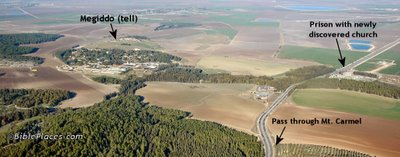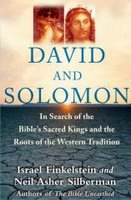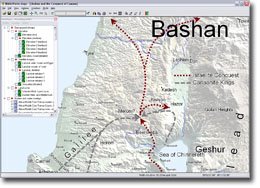The Jerusalem Post has a lengthy article on the recent excavations in the City of David. Though there are some basic factual errors, the article does a good job of informing the reader of some of the different views about the latest archaeology in the oldest part of Jerusalem. The two major excavations in the last decade are those of Eilat Mazar (“palace of David”) and Ronny Reich and Eli Shukrun (Warren’s Shaft, Siloam Tunnel, Pool and Spring Towers, Pool of Siloam). According to these excavators, the biblical accounts are essentially supported by the archaeology. According to Israel Finkelstein, an archaeologist at Tel Aviv U., “all of the recent discoveries from Ir David are merely ‘Messianic eruptions in biblical archeology.'” Perhaps the article’s writer misunderstood him, but if not, it’s really a stunning statement by one who has received major awards for his archaeological contributions. More accurately, it is a foolish statement.
I shouldn’t be surprised, because this is the trend. The trend used to be (unfortunately) that when anything was discovered it was immediately connected to the Bible and claimed to “prove” the Bible.
This itself is foolish, as often errors in identification and dating were made. Proof was desired so badly that caution wasn’t exercised.
The trend now is the opposite. Scholars who distrust the Bible respond in knee-jerk fashion to deny any biblical connection regardless of the evidence. Is the discovery of the “Pool of Siloam” really a “Messianic erruption”? How so? I’ll tell you what it is – a massive and impressive reservoir that dates (no doubt) to the time of Jesus and is the area where ancient sources describe (photos). It doesn’t prove that Jesus healed the blind man there, and no one is claiming that it does prove that. But some scholars are apparently so scared of anything that may relate in any way to the Scriptures that they dismiss them with a passing insult.
Perhaps Finkelstein wasn’t referring to the Pool of Siloam, but only to the “palace of David.” Now, I am not certain that the monumental building that Eilat Mazar discovered was David’s residence. And Finkelstein isn’t either. But you wouldn’t know it from the way he talks.
“Because there was no floor discovered and no pottery assemblages or olive pits or seeds, the building could be from the ninth century or the eighth or the eighth, or from two minutes ago, there is no way to know.”
But it also could have been from the 10th century. The reason that it “isn’t” is because Finkelstein’s mind is already made up. [Did he really say the building could have been from “two minutes ago” or is that just incompetent journalism?]
The article tries to spin this as Mazar and the sponsoring institution already having their minds made up. But no one has their mind made up more than Finkelstein, who published his elaborate theory in The Bible Unearthed. He argued, on the basis of the absence of evidence, that there was no great united monarchy in Jerusalem. Who has the most to lose? He does. Mazar’s discovery would pull the bottom card from his stack of cards. But the article doesn’t say that, and Finkelstein for certain doesn’t want to draw attention to that.
There is additional folly in the notion implied in this article that the sponsoring institution (which has right-wing views) could somehow change the discoveries in the excavation. It’s almost as if completely different things would be discovered if the dig was sponsored by a left-wing institution than if it was sponsored by the Shalem Center. Does anyone really believe that a respected archaeologist like Eilat Mazar would fabricate her findings? Does anyone really believe that if she did that she could get away with it? Archaeologists have voices and they have journals and they are not afraid to speak up.
Here’s a good rule of thumb for reading articles like these in the future: if the only nay-sayer is Israel Finkelstein, he can safely be ignored.


